
The Easter Bunny is a folkloric figure and symbol of Easter, depicted as a rabbit—sometimes dressed with clothes—bringing Easter eggs. Originating among German Lutherans, the "Easter Hare" originally played the role of a judge, evaluating whether children were good or disobedient in behavior at the start of the season of Eastertide, similar to the "naughty or nice" list made by Santa Claus. As part of the legend, the creature carries colored eggs in its basket, as well as candy, and sometimes toys, to the homes of children. As such, the Easter Bunny again shows similarities to Santa and Christmas by bringing gifts to children on the night before a holiday. The custom was first mentioned in Georg Franck von Franckenau's De ovis paschalibus in 1682, referring to a German tradition of an Easter Hare bringing eggs for the children.

A postcard or post card is a piece of thick paper or thin cardboard, typically rectangular, intended for writing and mailing without an envelope. Non-rectangular shapes may also be used but are rare. There are novelty exceptions, such as wooden postcards, copper postcards sold in the Copper Country of the U.S. state of Michigan, and coconut "postcards" from tropical islands.
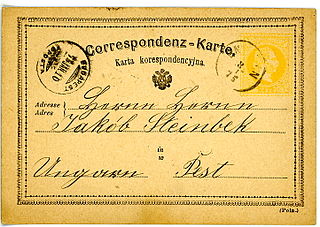
Postal cards are postal stationery with an imprinted stamp or indicium signifying the prepayment of postage. They are sold by postal authorities. On January 26, 1869, Dr. Emanuel Herrmann of Austria described the advantages of a Correspondenz Karte. By October 1, 1869 the world's first postal card was produced by Austria-Hungary. They caught on quickly. By the end of 1870, Great Britain, Finland, Switzerland and Württemberg joined the countries issuing postal cards. In the United States, they were first produced in 1873. Some of the forms taken by postal cards include the regular single card which may be commemorative or definitive, attached message-reply cards, airmail postal cards, and official postal cards used for official government business with a "penalty for private use".

A Christmas card is a greeting card sent as part of the traditional celebration of Christmas in order to convey between people a range of sentiments related to Christmastide and the holiday season. Christmas cards are usually exchanged during the weeks preceding Christmas Day by many people in Western society and in Asia. The traditional greeting reads "wishing you a Merry Christmas and a Happy New Year". There are innumerable variations on this greeting, many cards expressing more religious sentiment, or containing a poem, prayer, Christmas song lyrics or Biblical verse; others focus on the general holiday season with an all-inclusive "Season's greetings". The first modern Christmas card was by John Calcott Horsley.
"French Colonies" is the name used by philatelists to refer to the postage stamps issued by France for use in the parts of the French colonial empire that did not have stamps of their own. These were in use from 1859 to 1906, and from 1943 to 1945.

Killer Bunnies and the Quest for the Magic Carrot is a noncollectible card game created by Jeff Bellinger and graphic design/illustrations by Jonathan Young. Some early artwork for the game was also done by "Alex" Alexander, although credit for his contributions are not generally recognized. It is published by Playroom Entertainment.

Deltiology is the study and collection of postcards. The word was first coined by Professor Randall Rhoades of Ashland, Ohio, in 1945. However, it took about twenty years for it to first appear in a dictionary. Compared to philately, the identification of a postcard's place and time of production can often be an impossible task because postcards, unlike stamps, are produced in a decentralised, unregulated manner. For this reason, some collectors choose to limit their acquisitions to cards by specific artists and publishers, or by time and location.

PHQ cards are postcards issued by the British Post Office depicting the designs of their commemorative stamps. They are generally available to buy in main post offices about two weeks prior to the release of each new set of stamps.

The tradition of egg decoration in Slavic cultures originated in pagan times, and was transformed by the process of religious syncretism into the Christian Easter egg. Over time, many new techniques were added. Some versions of these decorated eggs have retained their pagan symbolism, while others have added Christian symbols and motifs.
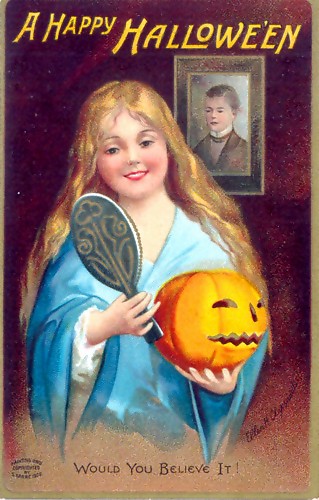
Ellen Hattie Clapsaddle was an American illustrator/commercial artist in the late 19th and early 20th centuries. Not only is her style greatly admired and well recognized, today she is recognized as the most prolific souvenir/postcard and greeting card artist of her era.
Since its origins, Easter has been a time of celebration and feasting and many traditional Easter games and customs developed, such as egg rolling, egg tapping, pace egging, cascarones or confetti eggs and egg decorating. Today Easter is commercially important, seeing wide sales of greeting cards and confectionery such as chocolate Easter eggs as well as other Easter food such as turkey. Even many non-Christians celebrate these features of the holiday while ignoring the religious aspects.
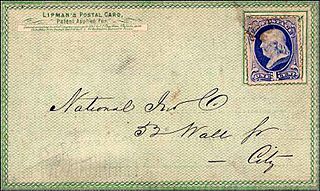
John P. Charlton was an American printer and stationer from Philadelphia, Pennsylvania, who is often credited as the inventor of the private postal card, which he copyrighted in 1861 together with Hymen Lipman.
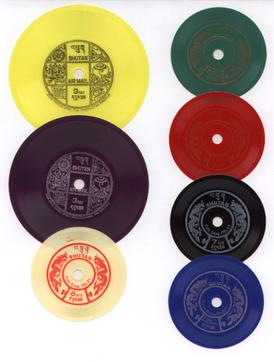
The first postage stamps of Bhutan were issued in 1962, the same year that the first motorable road was opened. Before that there was a mail delivery system in place for official mail using mail runners, and between 1955 and 1962 revenue stamps were accepted as payment for internal mail. With the opening up of Bhutan in the early 1960s, a formal postal system was introduced. The American entrepreneur Burt Todd assisted in establishing a postage stamp program in the country and Bhutan became known for the unusual designs and materials of its stamps which were chosen by Todd specifically to attract attention. With the assistance of the Indian postal advisor Dr. K. Ramamurti, who was in Bhutan from 1964 to 1968, a proper postal organization and infrastructure was set up under the leadership of a young Bhutanese officer Mr. Lam Penjor, who became the Director of the Department of Posts and Telegraphs.

The story of Japan's postal system with its postage stamps and related postal history goes back centuries. The country's first modern postal service got started in 1871, with mail professionally travelling between Kyoto and Tokyo as well as the latter city and Osaka. This took place in the midst of the rapid industrialization and social reorganization that the Meiji period symbolized in Japanese history. Given how the nation's railroad technology was in its infancy, Japan's growing postal system relied heavily on human-powered transport, including rickshaws, as well as horse-drawn methods of delivery. For example, while commemorating the 50th anniversary of Japan's postal service, the country's 1921 government released decorative postcards depicting intrepid horseback riders carrying the mail. This however was done to compare postal transport in past and present, as the other card showed modern transportation viz. rail and shipping. The railroad net from the north to the south, Aomori to Nagasaki, was completed in 1889. Prior to 1920s, local delivery was mainly by men- and horsepower, not principally different to Europe.
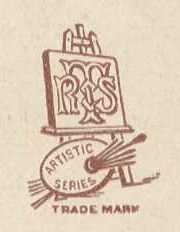
Raphael Tuck & Sons was a business started by Raphael Tuck and his wife in Bishopsgate in the City of London in October 1866, selling pictures and greeting cards, and eventually selling postcards, which was their most successful line. Their business was one of the best known in the "postcard boom" of the late 1890s and early 1900s. During the Blitz, the company headquarters, Raphael House, was destroyed, including the originals for most of their series. The company never fully recovered.
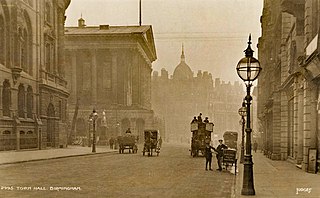
Judges Postcards is a picture postcard manufacturer based in St Leonards-on-Sea, East Sussex, first produced by Fred Judge in 1903. It was known as Judges Limited between 1910 and 1984.
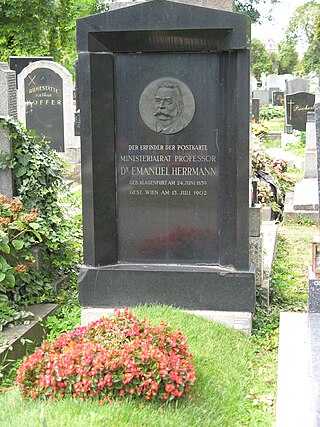
Emanuel Alexander Herrmann was an Austrian national economist. He is considered the decisive last in an international line of inventors of the postal card.

The Committee of American Students of the School of Beaux-Arts, Paris was an organization of American art students at the Ecole des Beaux-Arts in Paris. American alumni of the school were also involved. It was active as a war and war-relief charity supporting the French cause during World War I, operating from at least 1916 through the end of the war. Among other activities, they raised funds through the production and sale of art-postcards.
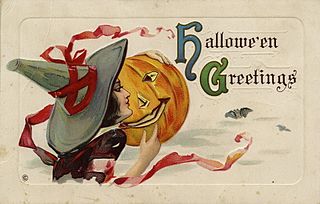
A Halloween card is a greeting card associated with Halloween. The concept originated in the 1890s United States, experiencing a peak of popularity there in the early 1900s. Until the advent of the common home telephone, Halloween cards occupied a role similar to Christmas cards and birthday cards. Today, many cards from the popular designers of the period are sought after as memorabilia.

Newman Post Card Co. (1904–1918) was founded by Oscar Newman. The Newman Post Card Company published post cards in hand colored collotype and tinted halftones, which were mostly holiday cards and views of Southern California.

























